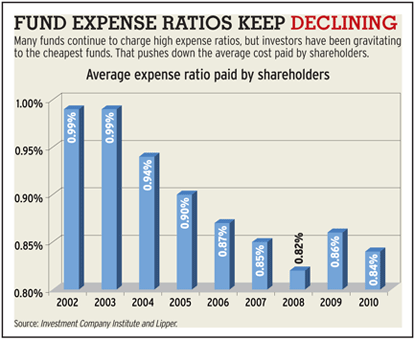Mutual Funds Picking A Mutual Fund
Post on: 28 Май, 2015 No Comment

Buying
You can buy some mutual funds (no-load) by contacting fund companies directly. Other funds are sold through brokers, banks, financial planners, or insurance agents. If you buy through a third party, you may pay a sales charge (load).
That said, funds can be purchased through no-transaction fee programs that offer funds from many companies. Sometimes referred to as fund supermarkets, these programs let you buy funds from many different companies. They also provide consolidated recording that includes all purchases made through the supermarket, even if they are from different fund families. Popular examples are Schwab’s OneSource, Vanguard’s FundAccess, and Fidelity’s FundsNetwork. Many large brokerages have similar offerings.
What to Know Before You Shop
Net asset value ( NAV ), which is a fund’s assets minus liabilities, is the value of a mutual fund. NAV per share is the value of one share in the mutual fund, and it is the number that is quoted in newspapers. You can basically just think of NAV per share as the price of a mutual fund. It fluctuates everyday as fund holdings and shares outstanding change.
When you buy shares, you pay the current NAV per share plus any sales front-end load. When you sell your shares, the fund will pay you NAV less any back-end load.
Finding Funds
Nearly every fund company in the country also has its own website. Simply type the name of the fund or fund company that you wish to learn more about into a search engine and hit search. If you don’t have a specific fund company already in mind, you can run a search for terms like no-load small cap fund or large-cap value fund.
For a more organized search, there are a variety of other resources available online. Two notable ones include:
The Mutual Fund Education Alliance is the not-for-profit trade association of the no-load mutual fund industry. They have a tool for searching for no-load funds.
Morningstar is an investment research firm that is particularly well known for its fund information.
Identifying Goals and Risk Tolerance
Before acquiring shares in any fund, you need to think about why you are investing. What is your goal? Are long-term capital gains desired, or is a current income preferred? Will the money be used to pay for college expenses, or to supplement a retirement that is decades away? Identifying a goal is important because it will help you hone in on the right fund for the task.
For really short-term goals, money market funds may be the right choice, For goals that are few years in the future, bond funds may be appropriate. For long-term goals, stocks funds may be the way to go.
Of course, you must also consider the issue of risk tolerance. Can you afford and accept dramatic swings in portfolio value? If so, you may prefer stock funds over bond funds. Or is a more conservative investment warranted? In that case, bond funds may be the way to go. (To learn more, read Analyzing Mutual Fund Risk .)
The next question to consider include are you more concerned about trying to outperform your fund’s benchmark index or are you more concerned about the cost of your investments? If the answer is cost, index funds are likely the right choice for you.
Additional questions, to consider include how much money you have to invest, whether you should invest in a lump sum or a little bit over time and whether taxes are a concern for you. (Learn how to invest with a small amount of cash in How To Invest On A Shoestring Budget .)














